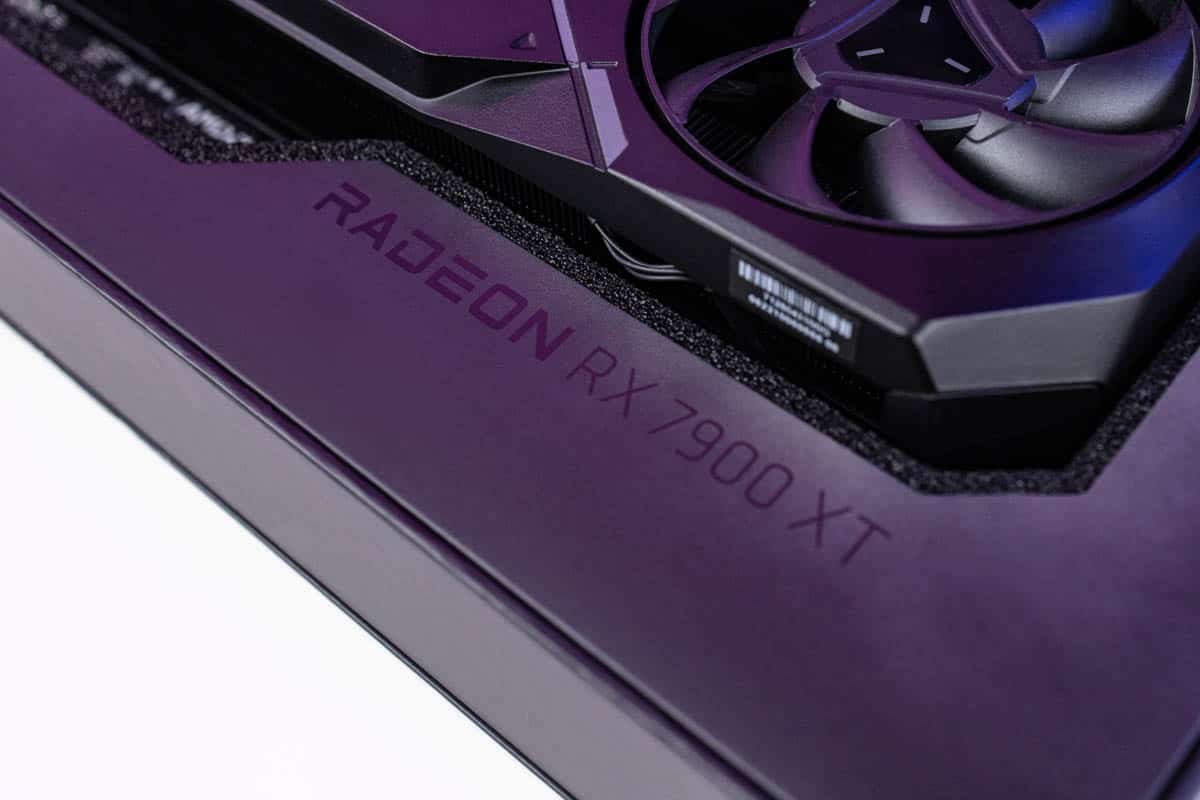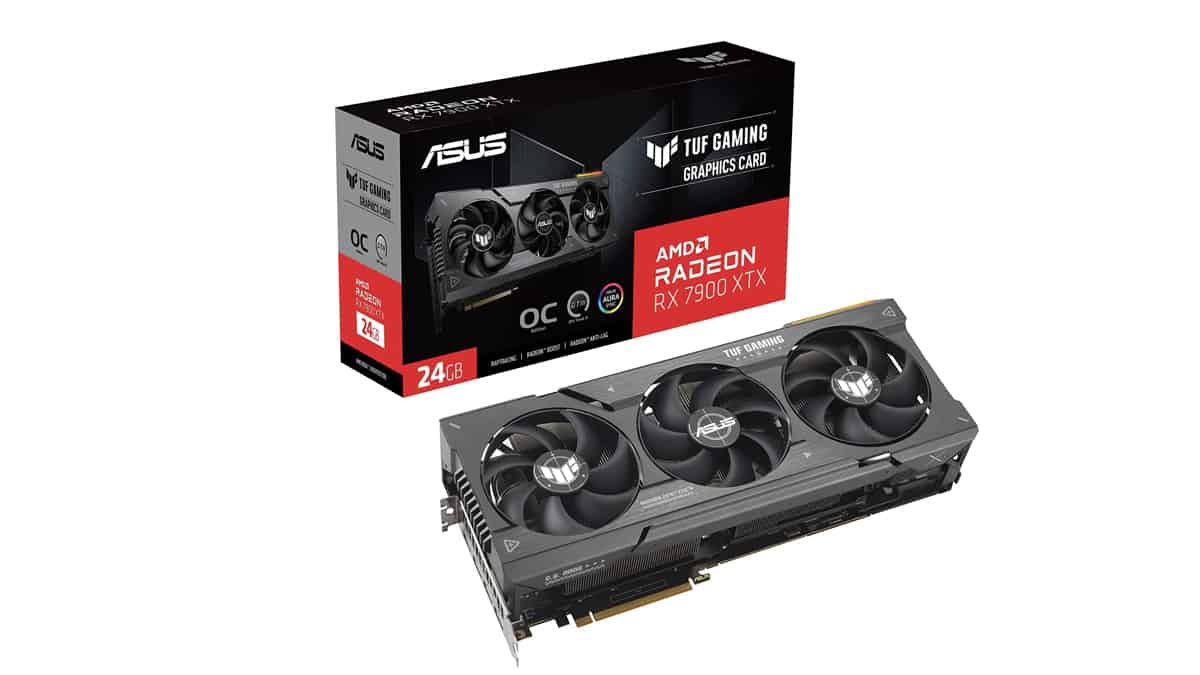RX 7900 XT vs RTX 3070

Table of Contents
The new AMD RX 7900 XT is starting to grow in popularity. People are loving the price and the performance this GPU delivers for it.
And that's nothing to be surprised about; this is a very strong and fast unit. But, as the love for this GPU grows we also have the need for context. In this article, we look at the RX 7900 XT vs the RTX 3070. Two strong GPUs, both created for gamers.
Prime Day is finally here! Find all the biggest tech and PC deals below.
- Sapphire 11348-03-20G Pulse AMD Radeon™ RX 9070 XT Was $779 Now $739
- AMD Ryzen 7 7800X3D 8-Core, 16-Thread Desktop Processor Was $449 Now $341
- ASUS RTX™ 5060 OC Edition Graphics Card Was $379 Now $339
- LG 77-Inch Class OLED evo AI 4K C5 Series Smart TV Was $3,696 Now $2,796
- Intel® Core™ i7-14700K New Gaming Desktop Was $320.99 Now $274
- Lexar 2TB NM1090 w/HeatSink SSD PCIe Gen5x4 NVMe M.2 Was $281.97 Now $214.98
- Apple Watch Series 10 GPS + Cellular 42mm case Smartwatch Was $499.99 Now $379.99
- ASUS ROG Strix G16 (2025) 16" FHD, RTX 5060 gaming laptop Was $1,499.99 Now $1,274.99
- Apple iPad mini (A17 Pro): Apple Intelligence Was $499.99 Now $379.99
*Prices and savings subject to change. Click through to get the current prices.
The 7900 XT and the 3070 are units from two different companies and generations. As technology advances, it's expected to see a big leap in performance in the newest GPU, the 7900 XT. However, it’s interesting to see how much of a difference there is, and in which cases each card may be a better choice.
RX 7900 XT vs RTX 3070 specs comparison
Let’s begin comparing the specs of each GPU. The first main aspect to pinpoint is ray tracing accelerators and DLSS. Both features have been the primary technology lead that allows Nvidia to lead the graphics card industry at the moment.
The RTX 3070, has the older DLSS 2.0 and ray-tracing capabilities. The vanguard architecture Team Green has used for these features gives the 3070 an incredible advantage over any other mid-range GPU when it comes to running games that are optimized for those add-ons.
Despite the fact that AMD hasn't been able to develop a technology that can quite compete with Nvidia's, the 7000 series of Team Red comes packed with strong specs. The 7900 XT has been built to endure almost anything you put against it. And thanks to its powerful cores, fast clock speeds, and amazing cache memory AMD has closed the gap in AI-powered graphics and ray tracing performance – while taking advantage of other gaming fields that don't use this technology.
| RX 7900 XT | RTX 3070 | |
| CUDA Cores / Pipelines | 5376 | 5888 |
| Number of transistors | 57,700 million | 17,400 million |
| L3 Cache | 80 MB | – |
| Stream Multiprocessors / Compute Units | 84 | 46 |
| Max Memory Size | 20 GB GDDR6 | 8 GB GDDR6 |
| Memory Speed | 20000 MHz | 14000 MHz |
| Memory Bandwidth | 800.0 GB/s | 448.0 GB/s |
| Base clock speed | 1500 MHz | 1500 MHz |
| Boost clock speed | 2394 MHz | 1725 MHz |
| TDP | 300 Watt | 220 Watt |
As we can see in the table above, AMD has managed to keep the base clock speed of its 7900 XT to the same level as the 3070, this means that the GPU will be capable of very low power consumption when idle or doing low demanding tasks. However, the boost clock speed of the RX 7900 XT is 28% higher than the 3070.
Another aspect to keep in mind is memory speed and size. The 7900 XT is built for a more demanding set of tasks so it has a bigger memory: 20GB over the 8GB VRAM of the 3070. This will help improve the performance when gaming especially in higher resolutions, but we will talk about performance in a bit.
To close the specs comparison, we can point out how the 3070 does not count with L3 Cache, while the 7900 XT has 80MB of cache memory. This difference is due mainly because of the chip architecture; the 7900 XT has more space to add that cache memory, while the 3070 finds itself cramped.
RX 7900 XT vs RTX 3070 price
Price is difficult to compare between these two GPUs. The RX 7900 XT is a high-end GPU while the 3070 was built for mid-range use. The pricing in both markets gets calculated differently. However, high Nvidia prices could change the perspective about how we can compare these two GPUs.
To begin weighing up the price of the GPUs, we can start comparing the launched MSRP: the RX 7900 XT was launched at an MSRP of $899 as the second flagship of AMD's 7000 series GPU, while the RTX 3070 was launched at half that price, at $499 as the mid-range GPU. The $400 difference is an expected gap between two GPUs in different markets. Now let's see the actual price.
The RTX 3070 has been in the market for a while, now. So it has already had its ups and downs. On the other side, the 7900 XT just got released and is still moving along the market. The RX 7900 XT has an average price of $1018, which is 1.1 times the MSRP, while the 3070 sits at $629 which is 1.3 times the MSRP.
RX 7900 XT vs RTX 3070 Performance
Performance is where the specs differences will show up. Before getting a bit technical with benchmarks and results. We need to keep in mind that these two GPUs were made with different use-case scenarios in mind. So it is possible that the RX 7900 XT gets bottlenecked when forced to run at lower resolutions.
The RX 7900 XT was built to support and perform in 4K resolutions and demanding content creation tasks, while the RTX 3070 was built with 1080p and 1440p as the targeted resolutions. So, any comparison will need to bear that in mind.
That being said, there’s enough information to see how the cards compare across resolutions. we've found some nicely done benchmarks on the web. Generally, we can see the RX 7900 XT outperforms the RTX 3070 in almost every game. There are some cases where the performance is roughly the same, but that only happens in 1080p and due to the bottleneck the 7900 XT suffers from being used in low resolutions.
Overall, the RX 7900 XT is 30 percent better than the 3070 in 1080p resolutions. And, even though we see results such as in Microsoft Flight Simulator 2020 where the FPS is the same (~53fps), the overall performance is still better in essentially every other case.
As we go upward in resolution, the difference between both cards becomes more evident. In 1440p the extra L3 Cache and VRAM start to work in favor of the 7900 XT and performance is approx 36 percent better than the Nvidia contender, across titles including MSFM (50fps vs 32fps), Elden Ring (73fps vs 48fps), and Shadow of the Tomb Raider (106fps vs 66fps).
Lastly, in the main resolution of the AMD GPU of 4K, Team Red outperforms the 3070 by an average of 40 percent.
PC Guide Expert View
If you're planning to play in 1440p or in 4K, you should consider getting the extra $400 to purchase the RX 7900 XT. On the other side, if what you need is to keep the resolution low (up to a 1080p), and want to save money on a budget build, the RTX 3070 is the best option. Otherwise, you'll be facing a very expensive bottleneck in your rig that won't let you enjoy in full the power of your components.



